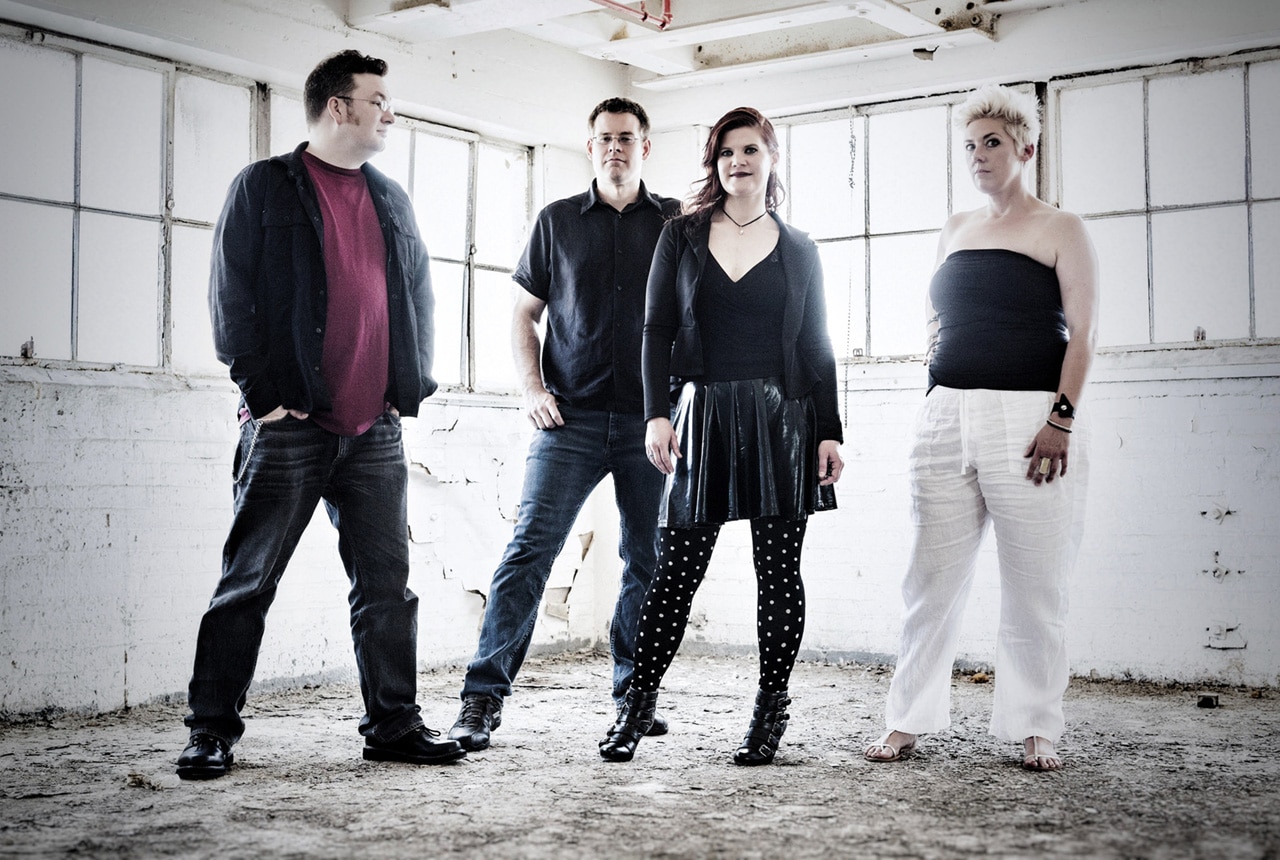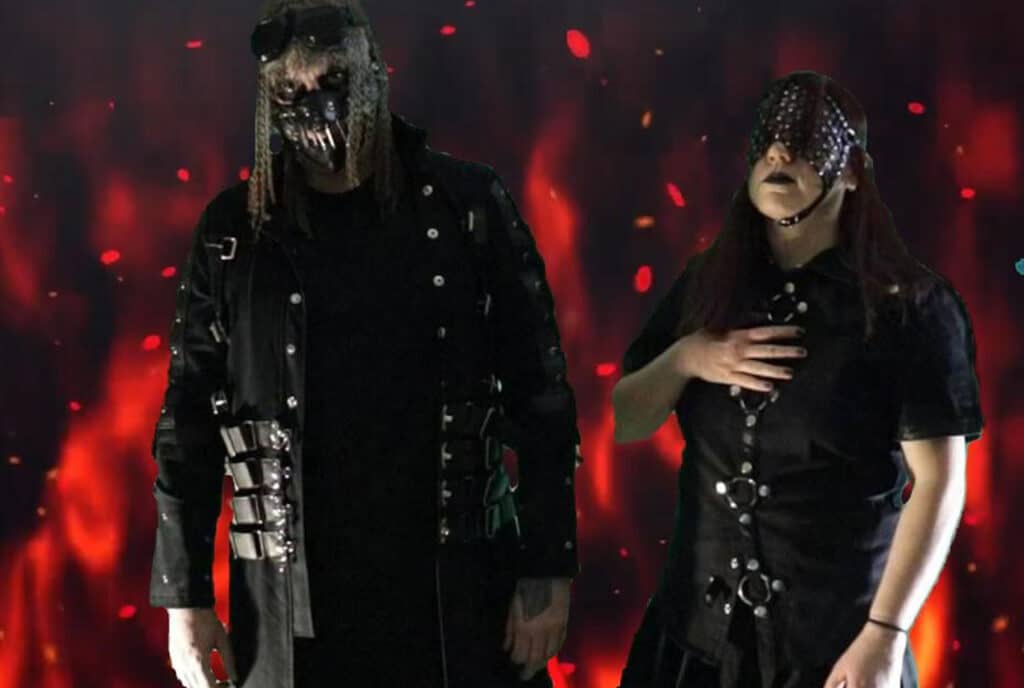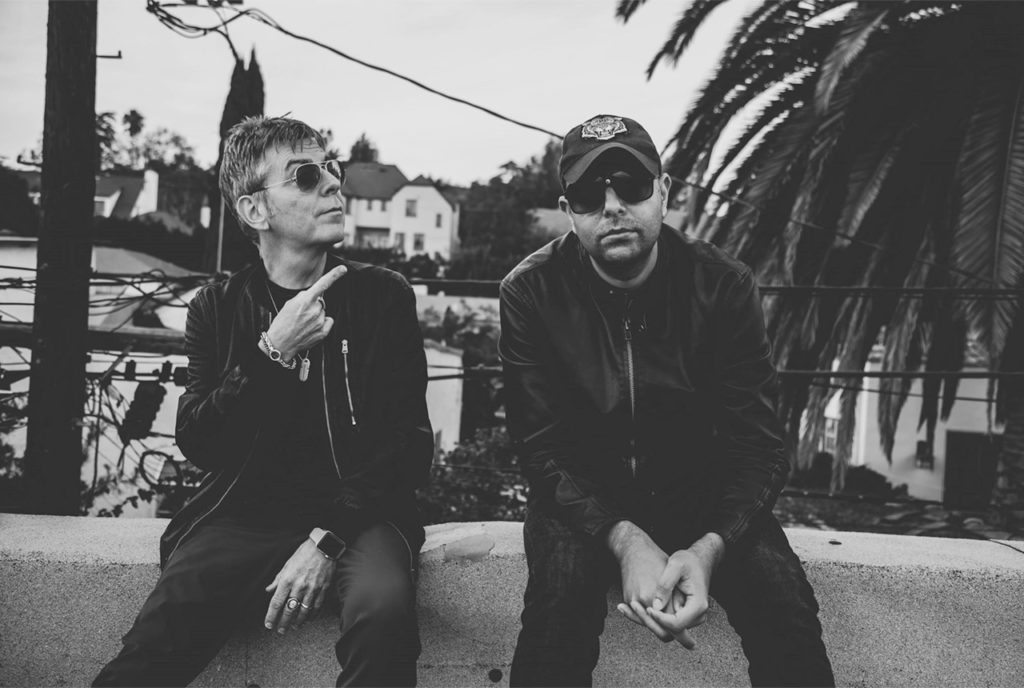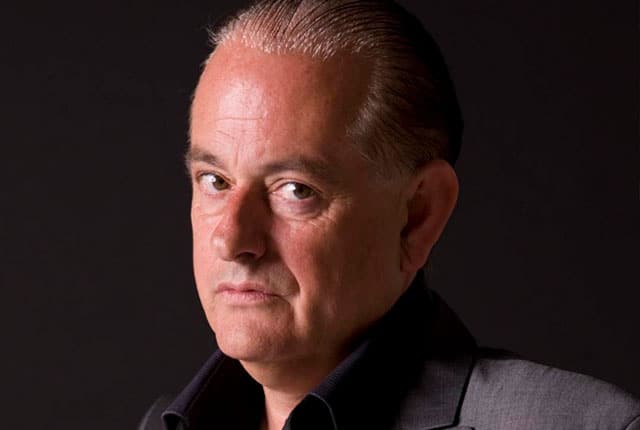“The Emerald Age” is the latest album from Madison, Wisconsin-based dark electronic pop band Null Device. The tightly-arranged music balances a cold synthetic edge with infectious melodic elements and emotive vocals. There isn’t a weak track on “The Emerald Age,” and the splitting of vocal duties between members Eric Oehler and Jill Sheridan brings additional variety to the collection. If there’s a complaint to be made, it’s that at 8 tracks, it leaves the listener wanting more.
In an email interview, Oehler and Sheridan discussed the album.
Did you have specific goals in mind when making “The Emerald Age”? What factors do you feel influenced the overall direction and sound?
Jill: To a degree, I wanted to shed the “restraint” that factored into my writing on earlier work. Historically, the Null Device “style” has been subtle and measured, and I used to be more conscientious, for lack of a better term, about how I approached lyrical content. A few years back, I began to approach things from a somewhat grittier place – for instance, the lyrics on the track ‘And I Fall’ (from our previous album) seemed edgier compared to my prior work and I realized that I enjoyed writing in that style. When I began working on the new album, I knew that I wanted to stick with an approach that felt more “raw.” This is probably one of the contributing factors in why ‘The Emerald Age’ has a “harder” vibe compared to other albums.
I also felt more initiative in pitching vocal and production ideas for this album. The social distancing of the past few years “forced” me to work independently from home. It might seem counter-intuitive, but I think this led to some discoveries that might not have happened if there had been more opportunities to meet and record material collaboratively with Eric. There would be times that I would have a flashing idea of “maybe this would cool!” and see what I could come up with independently at home before sending it over to Eric for his thoughts.
Eric O: We’ve been building to a more collaborative writing style for a few years, and this whole pandemic thing sort of forced us to really just go for it.
And in general, I think we were all just exhausted and angry about everything and decided to run with that. I certainly didn’t consciously decide “I’m going to write grittier music than before” but a lot of what I was writing just came out that way.
What was the timeframe of making it? Does the material represent the entire span between albums, or did you make “The Emerald Age” in a focused block of time?
Jill: In March 2020, we released the music video for “Run,” which was the third music video that I filmed and directed from our previous album. This was around the same time that the pandemic came into full realization. Between wrapping up the steady stream of video work from the prior album and grappling with the pandemic, I did not have energy to work on new material for several months. Then in October 2020, after many stops and starts, I finally completed the lyrics on ‘For You.’ This seemed to kickstart the writing process back into full gear for me. What followed is probably one of the angriest periods I’ve had from a writing standpoint and also one of my most prolific (I hadn’t realized that anger would be such potent writing fuel). With the despair of the pandemic and pent-up confusion about the state of the world, the sense of loss and uncertainty also factored in significantly, and I felt like there was a lot I could write about from those angles, as well. I wrote lyrics steadily from Fall 2020 through summer 2021, concluding with the lyrics on “Flags”. Additional time was also spent on the music production and recording, which lasted through mid-July 2022.
Eric O: A few of the demos that served as starting points had probably been kicking around since our last record came out, but writing and production didn’t start in earnest until 2020. Even then it was kinda tough, at least on my side of things. I would go into the studio and smash out the bones of a new song nearly every day, but very few of what resulted was anything I actually thought would be worth expanding on. I launched a few side projects in ’20 and ’21 to just find places for “things that I kinda liked but I didn’t think I could make into Null Device songs.”
I’d expected that, with a whole lot of extra time on my hands and nowhere to go, I’d get a lot more done, but overall emotional exhaustion and some unexpected stress from my day job just kinda dragged me down. Eventually the groove came back and suddenly I found myself a lot more prolific.
At what point in the songwriting process is it generally apparent who will sing a particular part?
Jill: I don’t write lyrics with a specific vocalist in mind and am first and foremost focused on delivering lyrics that have the potential for a good song. It’s usually not until after I’m done writing lyrics that I give much thought to who will sing them. That said, I think there’s a tendency for me to sing lead vocals on the tracks that have a “softer” or more “delicate” tone – they probably suit my voice better. Eric usually takes the lead vocals on grittier, sharper content. So we usually have an intuitive idea for who will “fit” a song, but sometimes it gets switched up later in the process.
Eric and I both write vocal harmonies. I really enjoy singing them!
Eric O: I tend to go on instinct – some songs just “feel” like one or the other of us should do it. I tend to do the grumblier stuff and Jill the more delicate, but it’s not always 100% the case. I know for a fact that Jill can do grittier stuff too; on one of the early demos for “For You” I’d really driven the preamp on the vocals and given the vocals an on-the-edge-of-distortion grind, and I thought it sounded pretty damned cool. As the arrangement of the rest of the track progressed though it seemed to fit less, though, so we ended up dialing it back. But it was pretty cool.
Your music has strong melodic parts, but the overall sound and mood play a big part in how the music comes across. Could you discuss how this relates to your creative process? For example, when writing do you usually have a sense of the final sound and production you’re going for with a song?
Jill: It can vary a lot. Sometimes Eric has music demos that I specifically write lyrics for or that I think would be a good fit for something that I’ve already written. Other times the lyrics are written first and then we come up with music to “fit” the vibe. There are also times when we start in one place but end up somewhere else. For example, ‘Snake Eyes’ went through several iterations before we landed on Eric singing it in a deep gravelly voice and pushed most of the choruses to the end of the song. “Mayhem into Ashes” originally started out with Eric singing the lead vocals over a grittier musical arrangement, but this eventually switched over to me singing the lead vocals with a more minimal, sweeping arrangement.
Eric O: There’s usually an iterative process. We get the general feel of a track working and then continually refine. Occasionally I’ll get some weirdo brainstorm and whip up an alternate version – “Unsafe And Sound” was like that. It had started out with a lot more Detroit techno influences, with 4-on-the-floor 909’s and some chord stabs, but I was poking around and made this noisy, distorted horn sound by accident and thought it sounded cool enough that I should work it in…and then I kept adding more and more noises and distortions and weird washes of sound. That’s the version we ended up going with.
I know the name Null Device is related to computer file systems, but I’m wondering if you feel it conceptually relates to your music or creative process? Or did you just like it?
Eric O: When the band started waaaaay back in the very early days it made a lot more sense, conceptually. I was writing music with experimental synthesis software, and was taking a lot of influence from Kraftwerk, 242, Lassigue Bendthaus, etc. So an exceptionally nerdy systems programming band name was apropos. Over the years we’ve drifted a lot from that starting point but the name has some recognition.
You’d performed fairly regularly in the past, and you planning on touring in support of the new album?
Eric O: We’ve already played a few shows in support of the Emerald Age, and we’ve got a few more lined up. I don’t know if we’ll tour, per se. We tend to play a lot of one-offs, festivals, showcases, and whatnot and we’ll definitely be doing that. Actual tours are always a bit tricky, since we’ve got band members with kids and we’ve all got day jobs and responsibilities and all that. If we do tour they’ll most like be short jaunts here and there, broken up over time, instead of a 3-weeks-in-a-van kind of deal. We’re at the point in our lives where we’re choosy about our gigs so they fit in with our daily lives; I’m under no illusions that at this point in my career that humpin’ it up and down the eastern seaboard is going to suddenly break the band.
Do you feel that your approach to live performance has changed over the years, perhaps due to changes in musical technology?
Jill: I think I am much more confident as a performer compared to when I started out years ago. Having in-ear monitors is probably the most important technological “advance” in terms of me feeling at ease on stage (nothing is worse than not being able to hear yourself on stage…except maybe for the time when the keyboard inexplicably transposed into the wrong key during the middle of our set — that was like being in an impromptu shreds video!).
The pandemic definitely required us to perform in creative ways when in-person shows weren’t a possibility. During the pandemic lockdown in Spring 2020, we performed in a Terminus livestream with a very unusual set up so that we could be socially distanced — I performed from the driver’s eat of my car (parked outside Eric’s house) with a reeeeaaallly long microphone cable and wireless in-ear monitors. Eric was in his basement, the “hub” where all the other equipment was located. We had a video feed from my car and also from Eric’s basement so that the audience could see each of us (we could each hear each other through the in-ear monitors but could not see each other). We later converted this setup to using two different rooms in Eric’s basement for socially-distanced livestreams (me in one room, and Eric in the other). After the covid vaccines came out, we performed a livestream together in the same room from Eric’s basement. Being able to perform from the same room once again was cause for much relief and joy!
Eric O: It’s probably no surprise to anyone that I love technology and relish any chance to get nerdy about something weird and niche. The aforementioned streaming rig for the livestreams was cobbled together from old computers I had sitting on a shelf, SIM-less phones, really long cables, and off-brand video hardware. By all accounts, it shouldn’t have worked as well as it did. It was definitely a bubblegum-and-twine approach to everything.
In terms of our actual performance sound, improvements in technology have allowed me to simplify our whole rig an awful lot. I was for a while trying some complicated stuff with effects automation in our live set, but in the end I found it didn’t add enough to really be worth the extra effort. And we were using this admittedly-very-cool wi-fi/iOS based in-ear system, but it did kinda get to the point where I spent as much time doing network performance troubleshooting as I did performing, so we ended up going back to dedicated hardware. I spend enough time doing IT stuff during the day, I don’t want to have to do it in my off hours. These days I can do so much with just one laptop behind me while we play that we can fit all the really important bits of our live show in carry-on luggage.
For more info, visit nulldevice.com. Purchase music at nulldevice.bandcamp.com.










